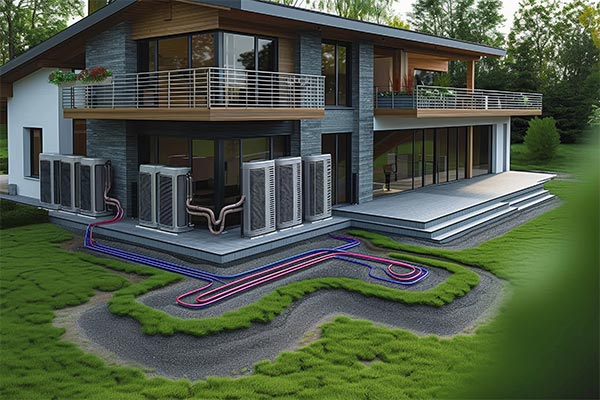Geothermal HVAC is considered a green energy choice for a number of reasons. Instead of burning fossil fuel, it capitalizes on the natural solar energy stored in the ground for heating a home. Geothermal HVAC also means less air pollution from natural-gas fired and coal power plants. It uses the ground as a heat source during the winter and as a heat sink during the summer. Geothermal takes the heat from the ground at 400 percent efficiency. During the summer, the heat drawn from the ground in the previous season is replenished back to the ground. In this sense, geothermal is a source of renewable energy. Geothermal provides both renewable energy and significantly raises the efficiency of the power grid while reducing energy consumption. It is the best green energy heating and cooling solution on the planet.
Facts that Make Geothermal a Green Choice
- Geothermal is environmental. These types of systems generate no onsite emissions and have the lowest pollutant emissions than any other HVAC technology.
- According to the EPA, geothermal is the most environmentally clean and cost-effective technology.
- Every 100,000 homes with geothermal systems reduce electricity consumption by 799 million kilowatts per year. The use of geothermal lowers electricity usage by 1 kilowatt per ton of capacity.
- The EPA has determined that geothermal reduces emissions and energy consumption by more than 40 percent when compared to air source heat pumps and over 70 percent when compared to conventional HVAC systems.
- With over one million geothermal units in the United States, more than 5.8 metric tons of CO2 have been eliminated, and 40 trillion BTUs of fossil fuels have been saved.
How Geothermal Systems are Installed
The three most popular closed-looped systems are horizontal, vertical and lake. Factors, such as soil conditions, required HVAC load and available land affect the underground loop and design. With the horizontal system, layered coils of polyethylene pipe are placed in 6 foot trenches. It is the least expensive option but requires a lot of open space. Vertical systems are often used when there is not a lot of space. Holes are drilled about 15 feet apart and up to 400 feet deep. Underground pipes are placed and connect at the bottom. If there is a body of water, such as pond or lake, coils are anchored on racks approximately 10 feet deep. The geothermal system draws heat from the water instead of from the soil.
HVAC Products and Services at Gentry Service Group in Columbus, NC
At Gentry Service Groupg, our NATE-certified technicians have the experience, knowledge and industry specific tools to install a geothermal system. We install top brand geothermal heat pumps for both businesses and residents, and all of our installations are 100 percent guaranteed. Customers can also save money with our Internet coupons on select heat pumps. If you’re considering going green with a geothermal system, be sure to give us a call.


